Sorcha
Clodagh Brennan
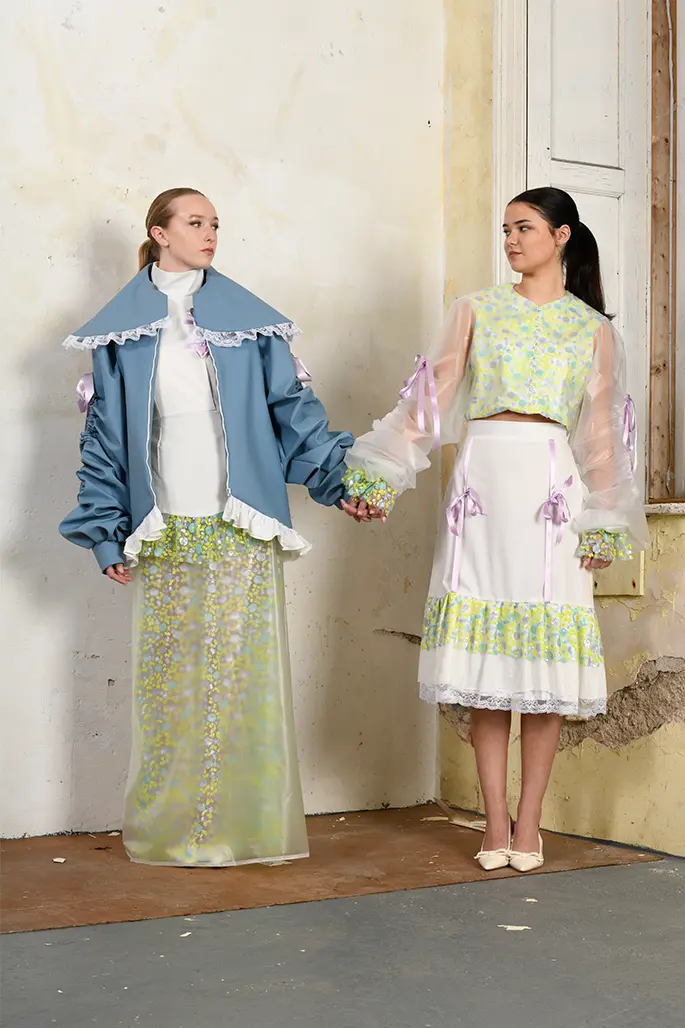
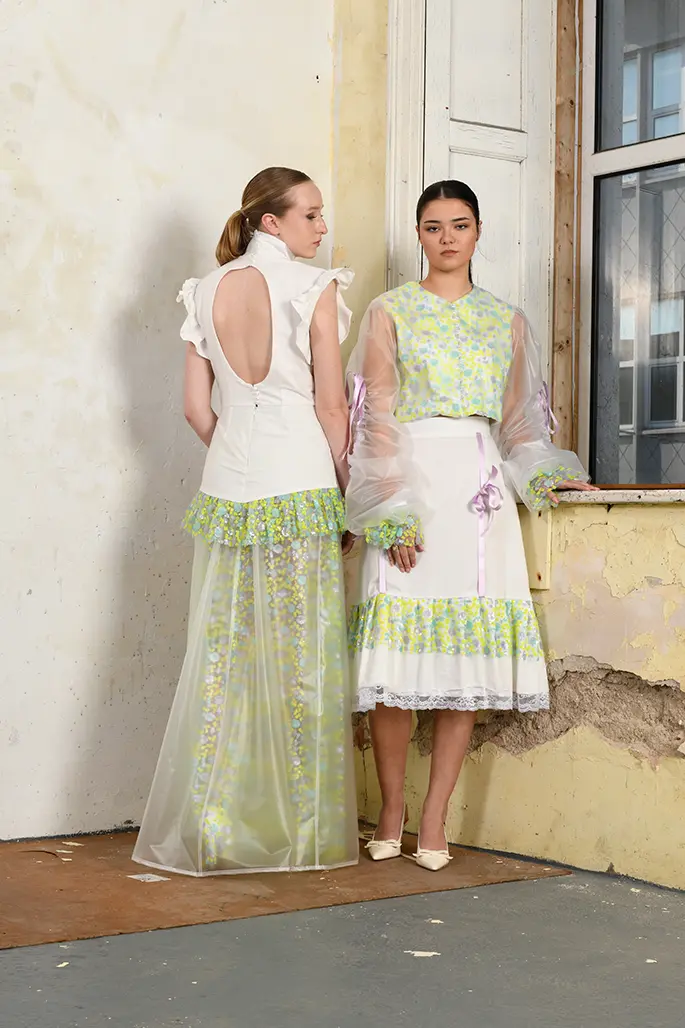
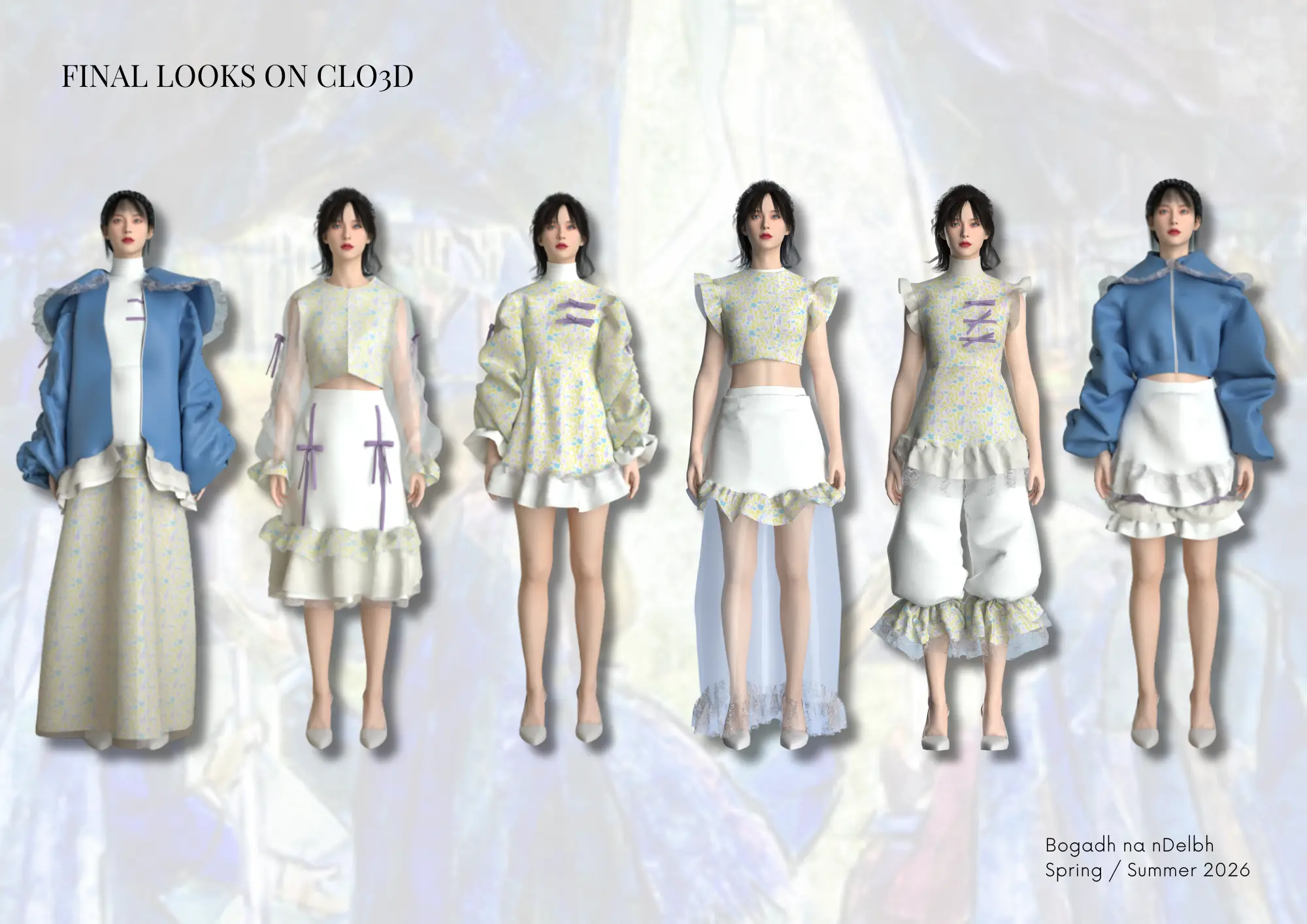
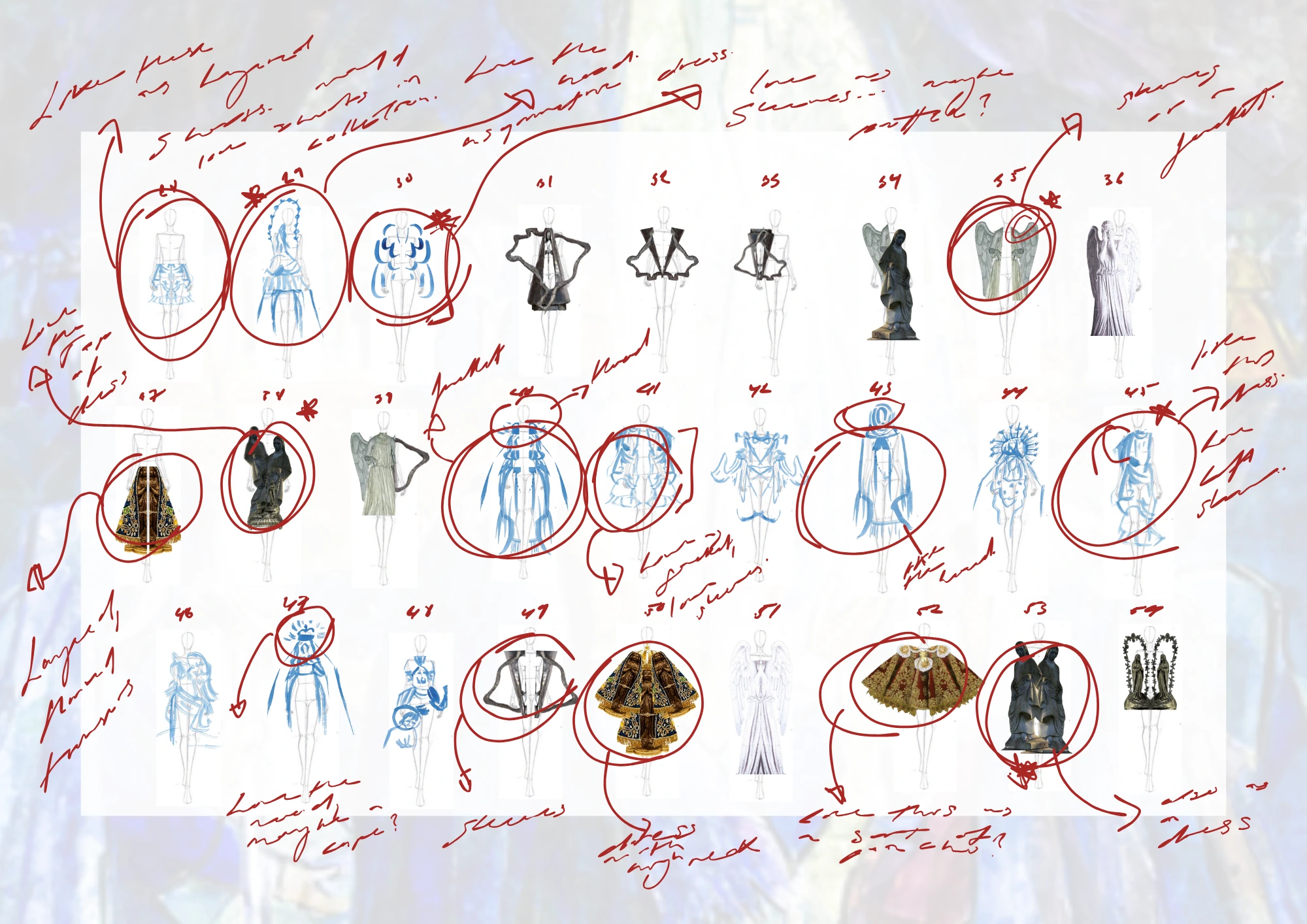
Bogadh na nDealbh
My graduation collection is inspired by the moving statue phenomenon, ‘Bogadh na nDealbh’, which captivated Ireland in the 1980s. Numerous reports emerged of statues of the Blessed Virgin Mary appearing to move. I sought to create a collection that both referenced the traditional iconography of Mary while reimagining it in a fresh and contemporary way, resulting in garments that captured the essence of movement and faith.
My design process began by studying various representations of the Blessed Virgin Mary and how her figure has been interpreted across different cultures. I responded to these images by creating my own hand-painted ink drawings of statues of the Blessed Virgin, which focused on line and silhouette. I collaged my ink drawings, transforming them into garments. This led me to use digital tools like CLO3D and Gerber to draft patterns and create my first toiles digitally, which allowed me to visualize the designs on the body before committing to making physical toiles. This process was particularly beneficial for me, as I sometimes find it difficult to visualize how a pattern will sit on the body. By working digitally, I minimized the need for physical toiles, resulting in only 5 toiles for the entire collection.
The original colour palette for my collection was inspired by contemporary Irish art, featuring bold pinks and greens. However, as I sourced fabrics, the colour story shifted towards a range of blues, whites, and purples, aligning more closely with my inspiration for the collection. I used a variety of materials such as leatherette, PVC, sequins, cotton and lace. This combination allowed me to experiment with textures and surfaces that are not typically associated with the Virgin Mary. Additionally, I hand-dyed the sequin fabric in blue to achieve a more subtle blue hue in contrast to the brightly coloured sequin.
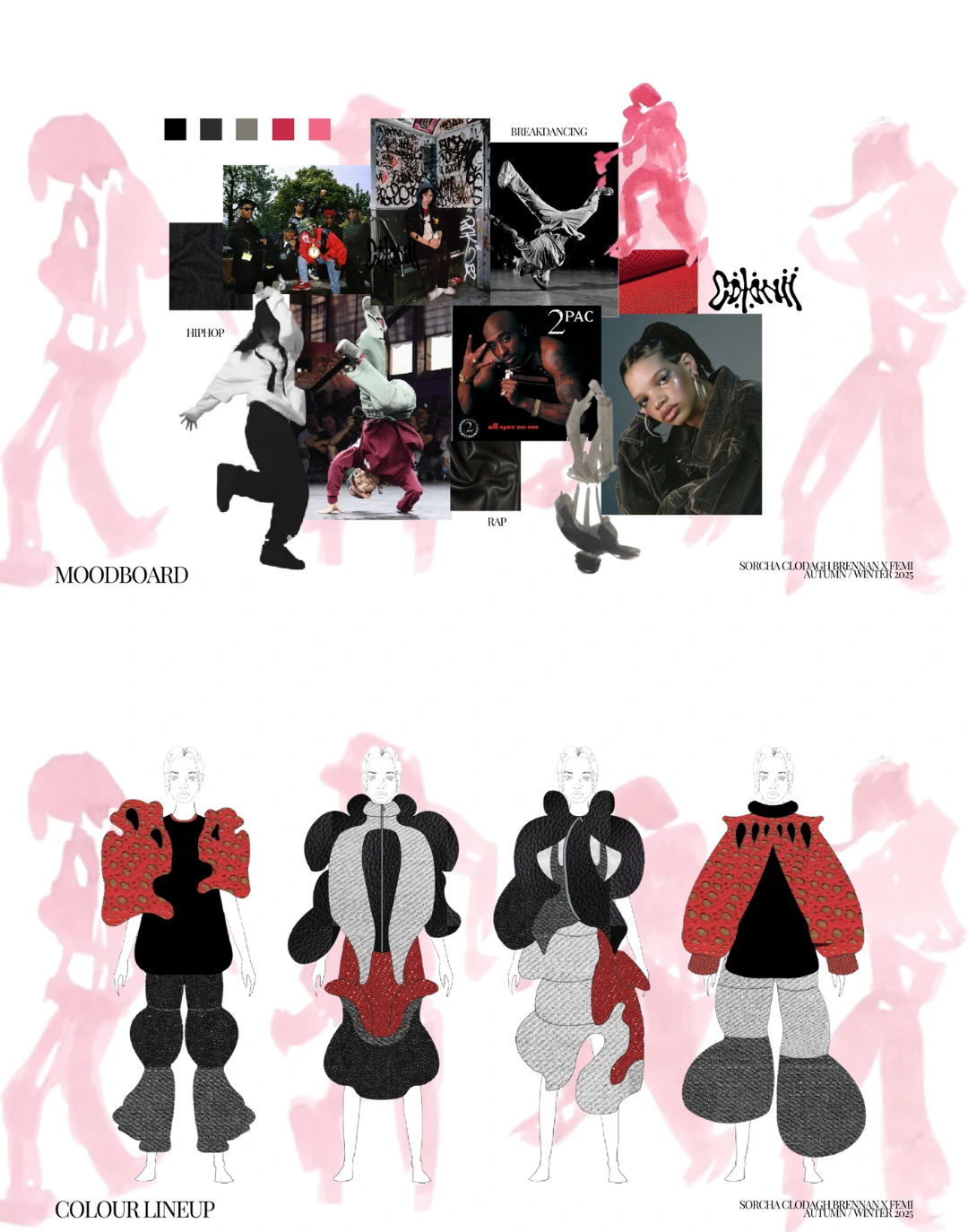
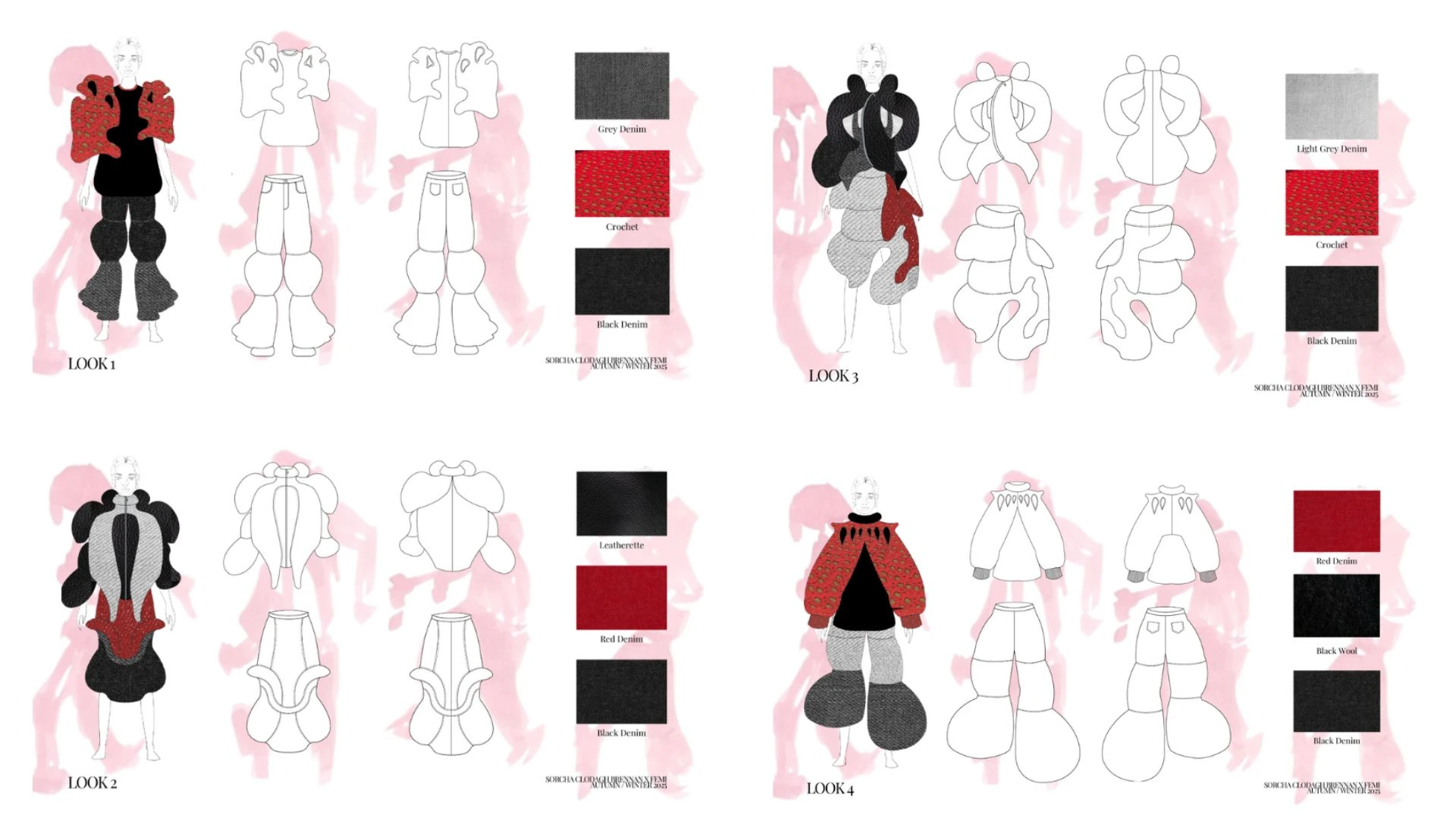
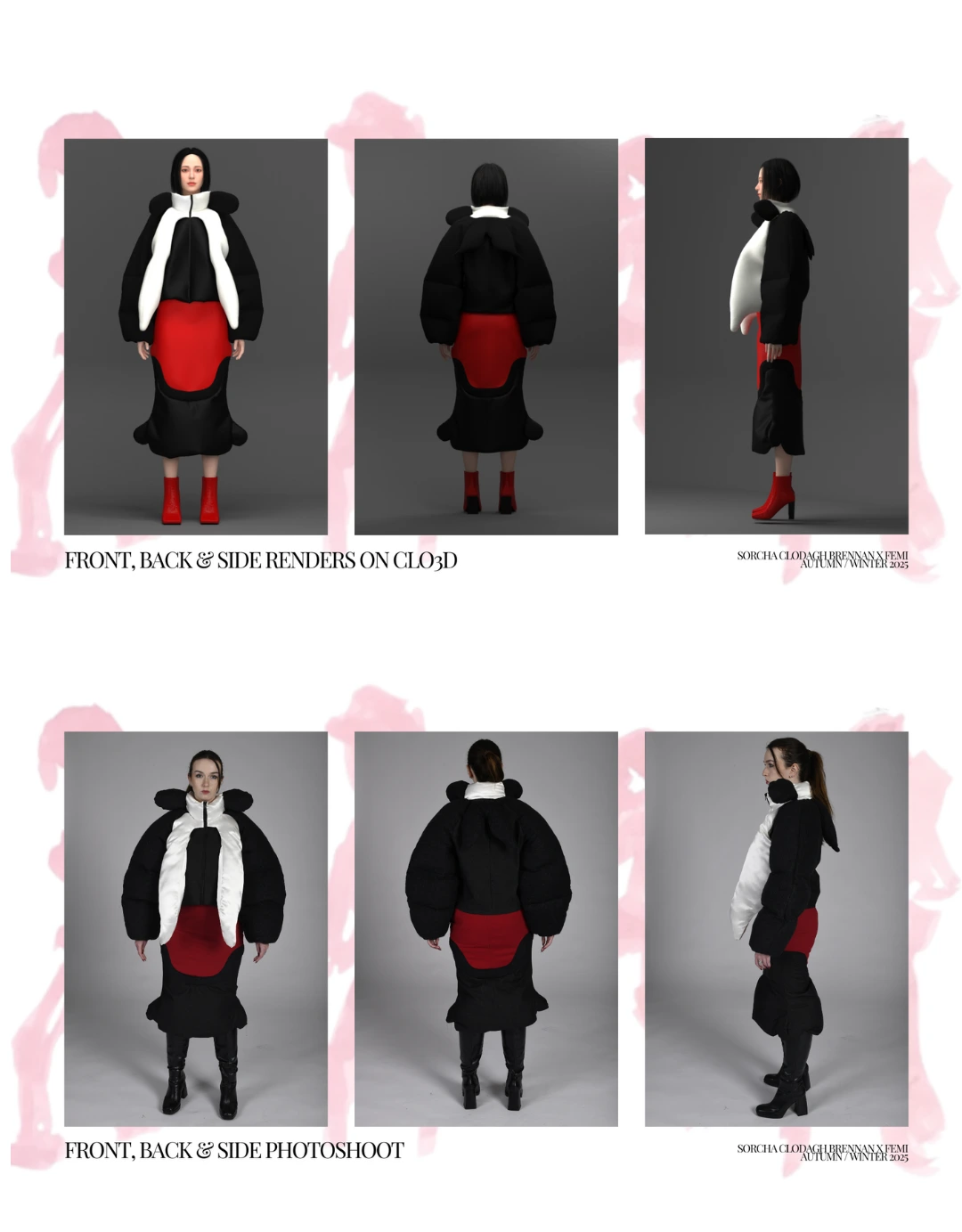
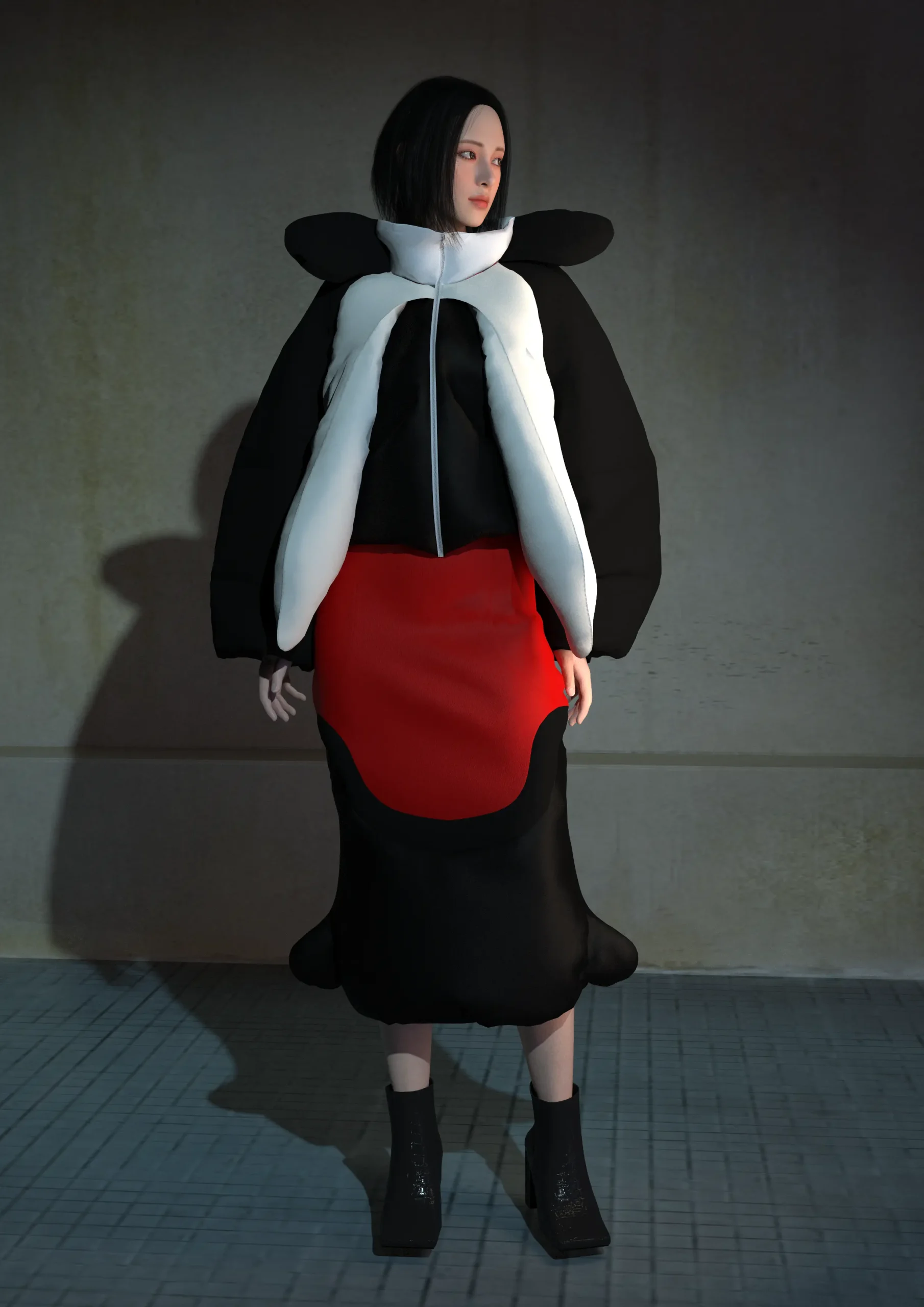
Neuron
Project Rationale:
‘Neuron’ is a project that was created in collaboration with Colonii. My Colonii collection was designed for the avatar Femi and was inspired by breakdancing and the origins of hip hop in America. I began by studying various poses of hip-hop dancers, using ink to capture their movements for shape inspirations, which later translated into the design of my garments. From there, I manually pattern drafted the designs and created my first toile. I utilized the digitizer on campus to digitize my patterns, allowing me to edit and grade them in Gerber. Initially when learning to use Gerber, I struggled with using the program, but working with my own patterns for this project made the process much easier. I brought my digitized patterns into CLO3D, where I digitally constructed the garments, allowing me to visualize how they would look before cutting into the actual fabric. This was incredibly helpful, as I often find it challenging to visualize how a pattern will translate into a real garment. With CLO3D, I was able to make necessary adjustments to the patterns based on how the digital garment appeared. This project allowed me to merge my traditional pattern cutting and sewing skills with new digital techniques.
In addition to making the garments on CLO3D, I also made them physically. The final look was made from wool, satin, canvas and denim. The majority of these fabrics were repurposed from previous projects in order to be more sustainable. This gave a result of a completely phygital collection.
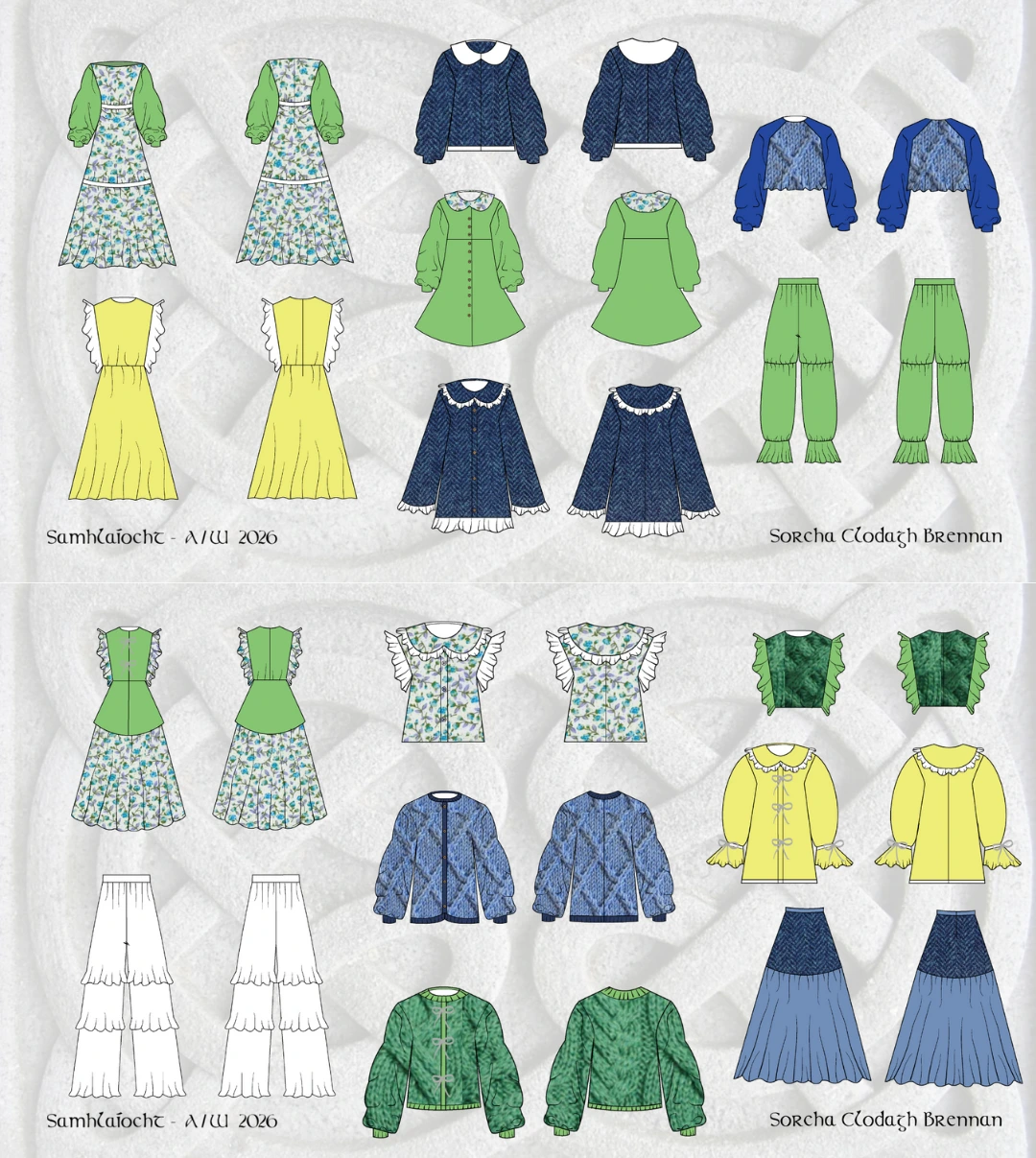
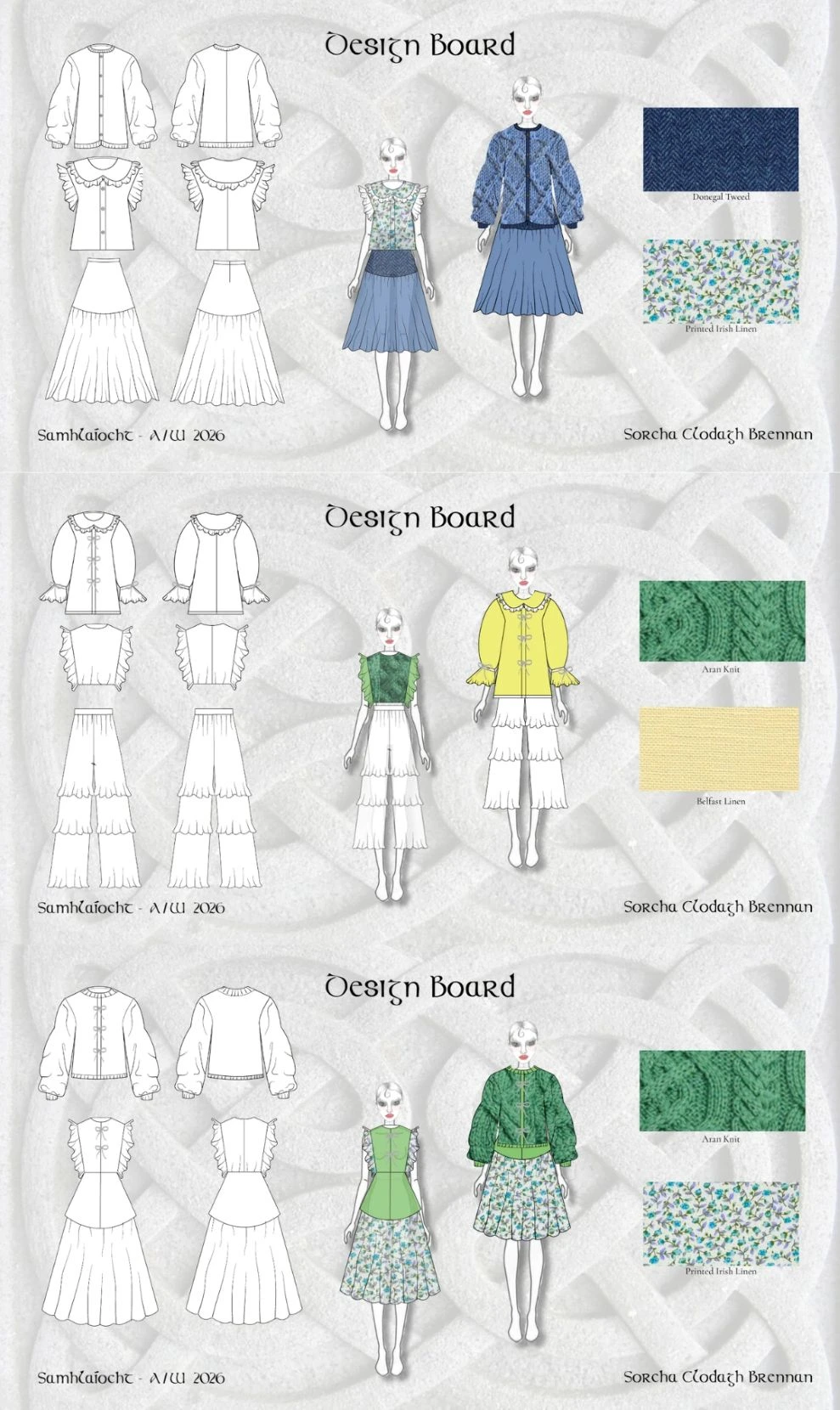
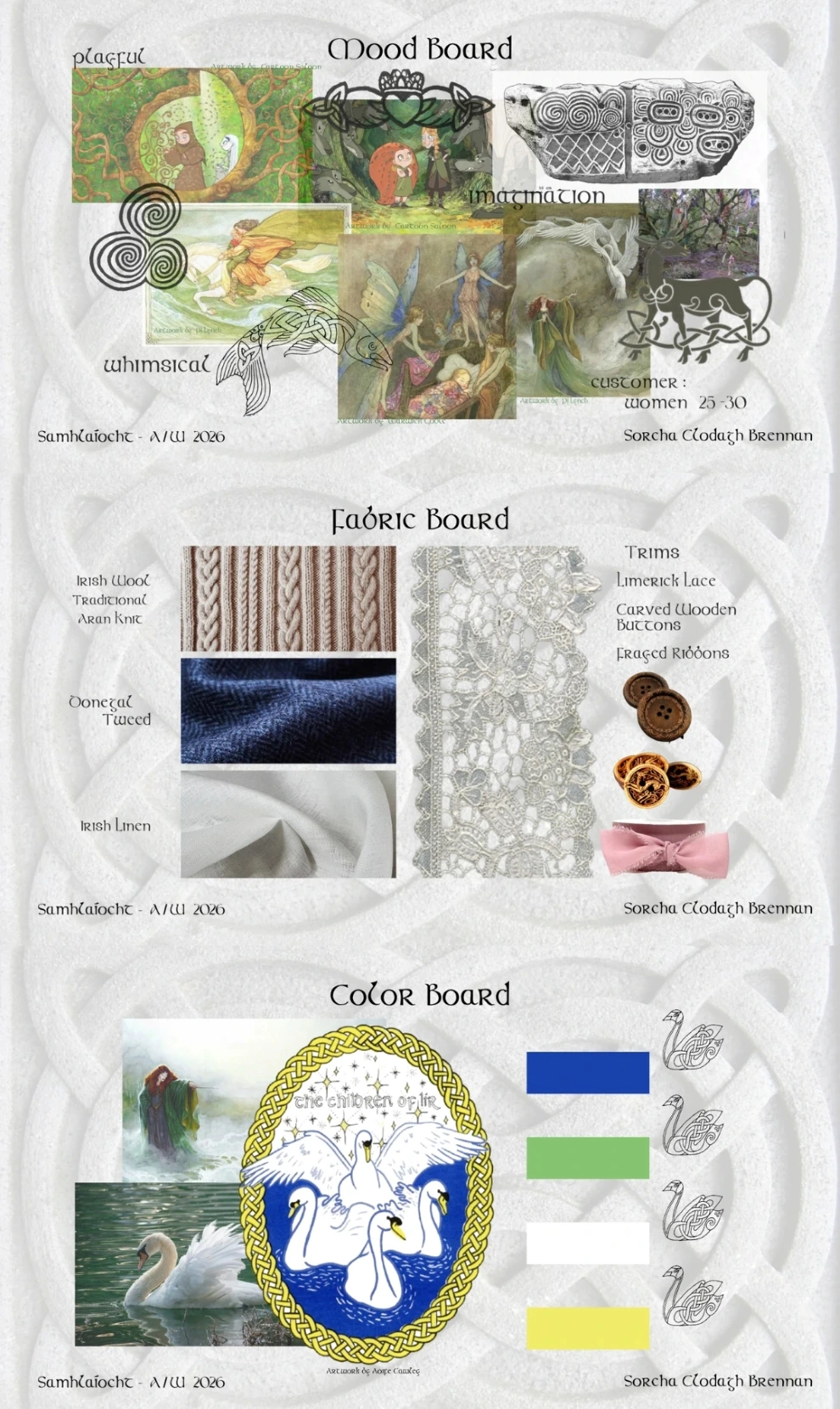
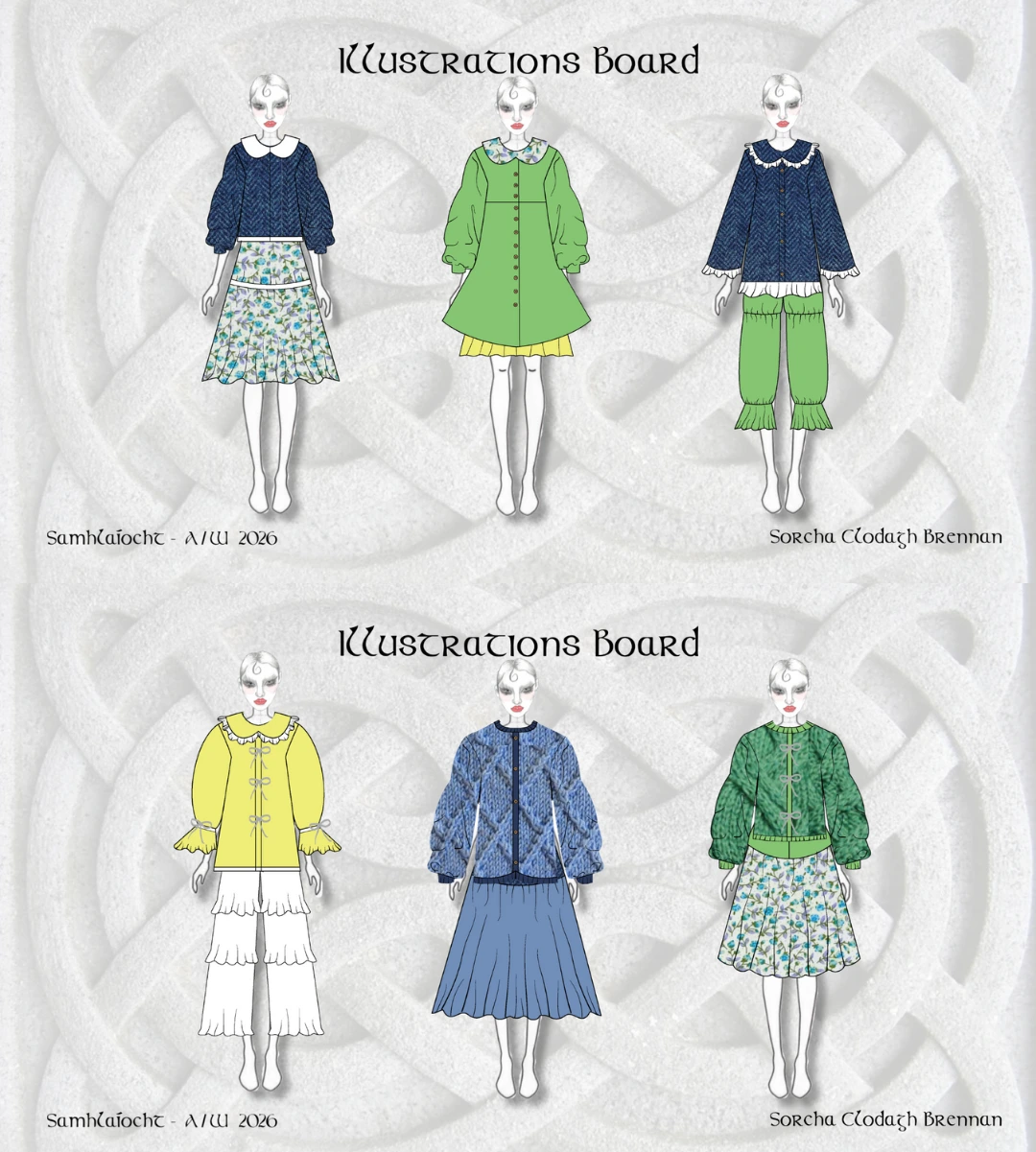
Project Rationale:
This digital fashion collection is deeply rooted in Irish folklore and the rich visual traditions of Celtic Irish art. Samhlaíocht, meaning imagination, this collection draws on both ancient mythology and contemporary interpretations. Key inspirations include the tales of The Children of Lir and Tír na nÓg, as well as carvings from the prehistoric monument of Newgrange. I also looked to the work of Cartoon Saloon, whose animated films offer modern, highly stylized interpretations of Irish folklore.
The colour palette, composed of soft greens, deep blues, and golden yellows, is inspired by various artistic interpretations of The Children of Lir. These hues evoke the natural elements of water, sky, and land, which are central motifs in both the mythology and the Irish landscape.
While the garments themselves are digital, they are designed to represent traditional Irish materials such as Irish linen, Donegal tweed, Aran knit, and Limerick lace. By incorporating these fabrics, the collection pays homage to Ireland’s legacy of artisanal craftsmanship and regional textile production.
The final outcome is a fully digital collection composed of six distinct looks, featuring a total of fifteen garments. Each piece was designed and rendered using Adobe Illustrator, with detailed flat drawings that explore both the structure and texture of each look. The digital format allowed for creative freedom in exploring fabric simulations, silhouette experimentation, and layered storytelling without the limitations of physical production.
